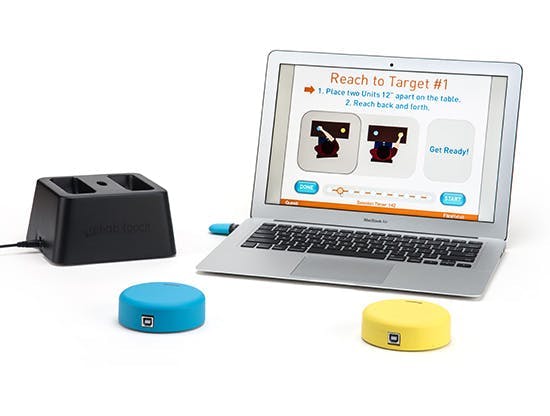Itching is usually no big deal. A bug bite, a dry patch of skin, maybe an allergy, these are common causes of itching for most people. But a neuropathic itch is something entirely different.
A neuropathic itch originates in the nervous system itself when damaged or misfiring nerves send signals to the brain that create the sensation of itching. This can be incredibly frustrating and lead to more serious complications.
Today, we’re going to break down everything you need to know about a neuropathic itch including what causes it, how long it can last, and most importantly what you can do to manage or treat the condition.
Let’s dive in!
What Is Neuropathic Itch?
Simply put, a neuropathic itch, also known as neuropathic pruritis, is a type of itch that starts in the nervous system, instead of on the surface of your skin. It happens when nerves misfire and send “itch” signals to the brain, even when there’s no reason to itch.
In other words, your brain thinks there’s a problem, even when there’s not.
People often describe it as:
- Burning, tingling, or prickling
- Deep and hard to reach
- Constant or off-and-on, but never fully gone
- Itchy without any rash or visible irritation
This kind of itch doesn’t usually respond to the usual treatments like hydrocortisone cream or allergy meds because it’s not caused by inflammation, histamines, or skin irritation. And unlike ordinary itching, scratching rarely brings relief and can sometimes make things worse by irritating sensitive nerves.
Neuropathic itch accounts for approximately 8% of all cases of chronic itch. It is also commonly associated with neuropathic pain, with one-third of those experiencing neuropathic pain also reporting neuropathic itch.
What Causes Neuropathic Itch?
There’s no single cause, but most cases trace back to nerve damage or irritation either in the brain, spinal cord, or peripheral nerves.
Here are some of the most common culprits:
1. Shingles (Postherpetic Neuralgia)
Even after the rash from shingles goes away, damaged nerves can keep sending itching or burning signals for months, sometimes even years. This lingering itch often affects the same area where the rash first appeared, making it especially frustrating.
2. Multiple Sclerosis (MS)
MS affects how the brain and spinal cord send and receive signals. For some, itching is one of the first strange sensations they notice, sometimes described as a crawling or tingling feeling. These symptoms can come and go unpredictably, depending on flare-ups and disease activity. Many report symptoms being exacerbated by heat.
3. Stroke
When a stroke affects certain parts of the brain, it can alter how your body interprets sensory information. Instead of processing touch or temperature correctly, the brain may misfire and create a sensation of itching, even when nothing is actually irritating the skin. Symptoms often occur on the side of the body opposite from where the stroke occurred in the brain.
4. Spinal Cord Injury
Injuries to the spine can scramble sensory messages between the brain and body. This may cause persistent, localized itching that doesn’t respond to scratching. People often notice it in areas below the injury site, and it can be one of the harder symptoms to explain to others.
5. Peripheral Neuropathy
Peripheral neuropathy damages the nerves outside the brain and spinal cord, commonly seen in diabetes, certain infections, or vitamin deficiencies. While burning and tingling are classic symptoms, many people also report intense itching in their hands, feet, or legs that sometimes become worse at night.
6. Nerve Compression
Pinched or irritated nerves can trigger neuropathic itch in very specific spots. For example:
- Brachioradial pruritus: Causes severe itching on the outer arms, often linked to cervical spine nerve compression.
- Notalgia paresthetica: Leads to chronic itching on the upper back, usually due to thoracic nerve irritation.
Both conditions highlight how even a small area of nerve compression can cause big problems.
7. Medications
Certain drugs like antidepressants, chemotherapy agents, or opioids can interfere with how nerves process signals. For some, the result is an itching side effect that shows up soon after starting a medication or adjusting the dose.
8. Tumors or Brain Lesions
Though rare, tumors pressing on sensory nerves or brain regions involved in sensation can create chronic itch. Unlike more common causes, this type of neuropathic itch may appear suddenly, worsen over time, and resist standard treatments.
In addition, sometimes the exact cause isn’t completely clear which can make things even more frustrating. However just because the cause isn’t immediately obvious doesn’t mean treatment isn’t possible.
How Long Does Neuropathic Itch Last?
How long neuropathic itch lasts really depends on what’s causing it and how your body responds to treatment.
For example:
- If it’s related to shingles, the itch might go away in a few weeks or months.
- After a stroke or spinal cord injury, it may stick around longer—sometimes for years.
- If it’s caused by a pinched nerve, physical therapy or injections might bring relief within a few months.
- If it’s a side effect of medication, it could stop once the medication is changed.
That said, neuropathic itch can be stubborn. It might improve and then come back. Some people go through cycles, with flare-ups triggered by things like stress, heat, or even just fatigue.
Is Neuropathic Itch Dangerous?
While neuropathic itch itself isn’t dangerous, it can take a serious toll on your day to day life and lead to further complications.
For example:
- Scratching can hurt your skin. It’s easy to go too far when the itch is that intense, leading to open wounds, scabs, or even infections.
- It can mess with your sleep. A deep, relentless itch makes it hard to fall—and stay—asleep, which adds to stress and fatigue.
- Your mood may take a hit. When itching becomes constant and disruptive, it can lead to frustration, anxiety, or depression.
- It might point to a bigger issue. Sometimes, neuropathic itch is an early warning sign of something more serious, like MS or a brain lesion.
If you’re dealing with a strange itch that won’t go away, especially if it’s one-sided or paired with pain, tingling or numbness, don’t ignore it. It’s worth getting checked out.
Can Neuropathic Itch Go Away?
In some cases, neuropathic itch can resolve completely, especially when the nerves recover from temporary irritation or injury. For example, itch related to mild shingles or minor nerve trauma may fade as healing occurs.
However, when nerve damage is ongoing — as in multiple sclerosis or peripheral neuropathy — symptoms may persist. Even so, treatments can significantly reduce discomfort and improve quality of life. The key is early diagnosis, targeted therapy, and consistent symptom management.
So yes, neuropathic itch can go away but not always on its own, and not always quickly.
If the cause is treatable (like a compressed nerve or medication side effect), then there’s a good chance the itch will improve with time and care. But if there’s ongoing nerve damage, the itch may become a long-term challenge.
Here are some factors that affect recovery:
- How quickly treatment starts: The sooner you address nervous system damage, the better.
- Your overall health: Younger, healthier people tend to bounce back faster.
- The root cause: Some conditions (like mild shingles) may gradually improve. Others, like stroke-related itch or nerve trauma, may linger longer.
Even if the itch doesn’t fully go away, the good news is that there are many ways to manage it and feel more comfortable.
Let’s take a look at 5 proven ways to treat and manage neuropathic itch.
Treatment for Neuropathic Itch: 5 Proven Ways to Manage and Treat
Now for the most important part: how to feel better. Because this type of itch is based in the nervous system, treatment looks a little different than for regular skin irritation. You’re not just calming the skin but rather you’re calming the nerves.
That means taking a more comprehensive approach that targets both the nervous system and your overall well-being.
Here are 5 proven ways to help manage and treat neuropathic itch.
1. Medications That Soothe the Nerves
Neuropathic itch often doesn’t respond well to standard anti-itch creams or antihistamines. Instead, doctors usually turn to medications designed to modulate nerve activity.
These may include:
- Gabapentin or Pregabalin: These are first-line treatments for nerve pain and can also calm the hyperactive nerves responsible for itch. Many people notice a reduction in both intensity and frequency of their symptoms after a few weeks.
- Low-Dose Antidepressants (like amitriptyline or nortriptyline): These medications affect how your brain interprets signals from your body. At low doses, they can be surprisingly effective at reducing chronic itch without major mood-related effects.
- Capsaicin Cream: Derived from chili peppers, capsaicin works by exhausting a neurotransmitter called substance P, which nerves use to send itch and pain signals. At first it may sting a bit, but regular use often leads to a numbing effect.
- Lidocaine Patches: These are applied directly over the affected area to dull sensation. They’re especially helpful for people with localized itching and can be worn discreetly under clothing.
- Low-Dose Naltrexone (LDN): Originally used to treat addiction, this medication has gained attention for its ability to “reset” the nervous system. For some, LDN reduces chronic itch and pain by modulating inflammation and endorphin activity.
Remember to always consult a healthcare provider before starting any new medication, especially since these are often used off-label for itch.
2. Physical Therapy and Posture Work
If the itch is coming from a pinched nerve or spinal compression (as with conditions like notalgia paresthetica or brachioradial pruritus), physical therapy can make a big difference. Here, the goal is to reduce nerve irritation and improve overall alignment so that you are no longer placing pressure or irritating the nerve.
A good physical therapy program might include:
- Gentle stretching: To relieve muscle tension that may be pressing on nearby nerves.
- Spinal alignment: Postural work and manual therapy to take pressure off irritated nerve roots.
- Nerve gliding exercises: Also called “nerve flossing,” these help desensitize the nerves and improve mobility without aggravating symptoms.
- Core strengthening: Better core stability supports your spine and helps prevent further nerve compression.
Many people don’t realize how posture and spinal health can impact sensations like itching until they start moving differently and feel real relief.
3. Nerve Blocks or Injections
For severe or unrelenting neuropathic itch, especially when other treatments haven’t worked, more direct interventions may be considered.
- Steroid or anesthetic injections: These target the affected nerves and reduce inflammation or block overactive signals for a few weeks or months.
- Botox (botulinum toxin) injections: In some cases, Botox has been used to calm overactive nerve endings that are constantly firing itch signals.
- Epidural or nerve root blocks: For more widespread spinal involvement, these can offer more long-term relief by treating the source of nerve irritation.
These procedures are usually handled by pain management or neurology specialists and may require imaging guidance for precision.
4. Mind-Body Approaches
Neuropathic itch isn’t “just in your head” but the brain does play a huge role in how you experience and respond to it. Stress, anxiety, and poor sleep can all make symptoms worse. That’s why many people benefit from strategies that support the nervous system from the top down.
Some helpful options include:
- Cognitive Behavioral Therapy (CBT): Especially useful for breaking the “scratch-itch” cycle and coping with the emotional toll of chronic symptoms.
- Mindfulness and meditation: These help reduce stress hormones and improve body awareness, making it easier to manage the urge to scratch.
- Breathing exercises or progressive muscle relaxation: Can calm the body and reduce the intensity of flare-ups.
- Sleep hygiene routines: Deep, restorative sleep gives your nervous system a chance to recalibrate, which can lower sensitivity over time.
Even simple things like listening to calming music, journaling, or talking to a therapist can be part of an effective care plan.
5. Simple Lifestyle Adjustments
Small everyday changes can make a big difference when it comes to managing symptoms and preventing flare-ups.
Here are a few practical tips:
- Keep your skin cool: Heat can make neuropathic itch feel worse. Try cool showers, fans, or even chilled compresses during flare-ups.
- Choose soft, breathable fabrics: Cotton and moisture-wicking materials tend to be gentler on sensitive skin.
- Use gentle moisturizers: Even if dry skin isn’t the root cause, dryness can amplify the discomfort. Look for fragrance-free lotions with ceramides or colloidal oatmeal.
- Watch out for personal triggers: Spicy foods, alcohol, or hot showers can set off symptoms in some people. If you’re not sure what your triggers are, keeping a symptom journal may help you spot patterns.
- Avoid scratching when possible: It’s hard, but scratching can worsen inflammation or even cause skin damage. Using distraction techniques, stress balls, or even wearing gloves at night can help break the habit.
Conclusion
Neuropathic itch is more than just an annoyance. It can affect how you sleep, move, and feel every day. But you’re not alone in dealing with it, and with the right diagnosis and a targeted treatment plan there are ways to feel better.
While typical itch treatments might not help, nerve-focused options from medications to therapy to lifestyle tweaks can make a big difference. The key is to find the combination that works best for you.
If your itch feels like it’s coming from the inside out, or you’ve tried everything and nothing helps, don’t give up. Keep asking questions, keep seeking support, and know that relief is possible.









